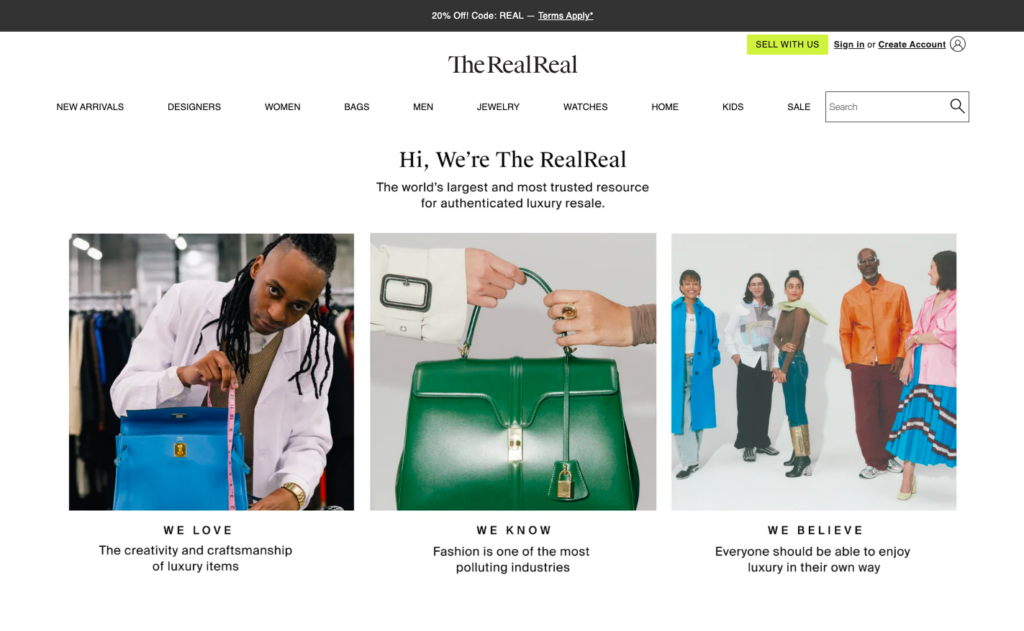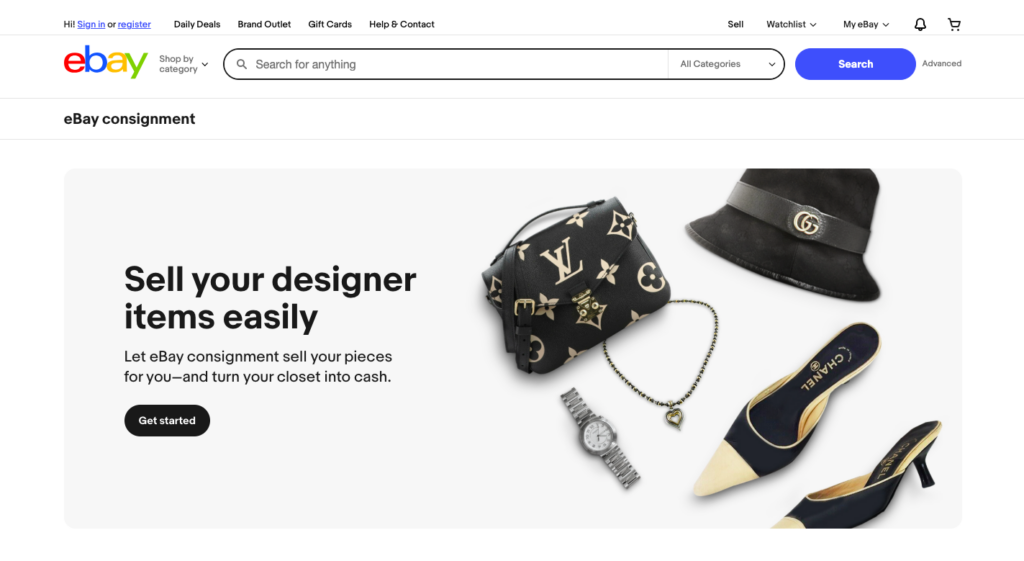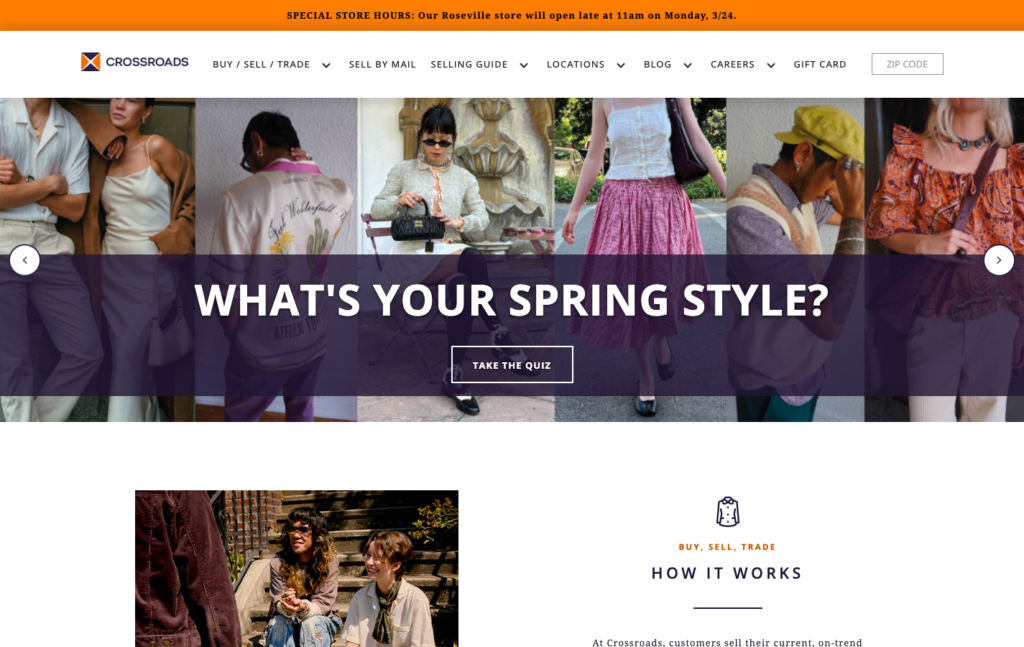What is a consignment store? A simple guide to how it works
How do consignment stores work? What types of goods do they accept? Are items sold in consignment stores in good condition? These are some of the common questions about how consignment works — whether you’re shopping, selling, or thinking about opening one.
Consignment stores sell secondhand items for others and take a percentage of the sale once the item is sold. It’s a convenient option for people who want to sell without handling the process themselves and gives shoppers access to quality items at lower prices.
For aspiring entrepreneurs, it offers low upfront costs, especially online, where you may only need to pay a small fee to set up a website instead of renting a physical space.
This article explains how a consignment store works, the benefits of running one or shopping at one, and tips for opening your own.
What is a consignment store?
People sometimes confuse consignment, secondhand and thrift stores. First of all, secondhand encompasses various ways of buying or selling used things and it can include both consignment and thrift stores.
Thrift stores are mainly based on donations – people donate things they no longer need, and the store often passes the profit to a charitable organization.
In contrast, consignment stores display and sell things for individual sellers, usually everyday people who want to earn money from gently used items they no longer need. These sellers maintain ownership of their items until they’re sold, and the store takes a commission from each sale.
A lot of consignment stores focus on specific niches, like vintage ones that specialize in older or collectible pieces. An example is Thrifted.com, which offers curated vintage clothing for men and women, primarily from the 1970s through 1990s.
Commonly consigned items include clothing, toys, furniture, books, and electronics, with clothing being the most popular category in both online and physical stores.
How does a consignment store work?
Whether you’re looking to sell items to a consignment store or thinking about opening your own, here are the key things you should know:
The consignment process:
It starts with sellers sending their goods to the consignment store for evaluation.
The store owner assesses the items based on their condition, demand, and whether they’re a good fit for the store, then works with the seller to agree on a price and commission rate.
The seller receives payment only after the item sells, either via check, cash, or direct deposit, depending on the consignment store’s policy.
Seller and store agreement:
Aside from pricing and commission rates, the seller and consignment store owner agree on the following:
- How long the item will be on sale. Most consignment agreements keep items on sale for 60 to 90 days.
- Shipping or delivery costs for online purchases. Shipping costs are usually covered by the consignment store.
- What to do if the item doesn’t sell within the agreed time frame. If an item doesn’t sell, the store owner may donate it, return it to the seller, bundle it with another item, or offer it at a discount.
The benefits of shopping at a consignment store
While it may seem faster to shop at a regular store since you don’t have to check for flaws, buying through consignment offers unique advantages.
- Good for the environment. In the U.S., over 13 million tons of clothing are thrown away each year. Shopping secondhand helps reduce waste and lowers the demand for new production.
- Affordable products. Consignment shops offer gently used items at lower prices.
- More chance of finding unique items. Before becoming mainstream, the consignment market catered specifically to niche markets like vintage clothing enthusiasts. That said, you’ll often discover rare pieces that aren’t available in regular stores.
- Supports local businesses. Shopping at a consignment store near you supports the local economy and provides income for people in your community.
- Convenience. Online consignment options make it easy to shop from the comfort of your home.
The benefits for sellers
Consignment selling can provide an easy way for anyone to earn income and clear out the things they no longer need. It’s a practical option for those who want to sell without handling the process themselves.
- High visibility and exposure. Working with consignment shops increases your chances of making a sale since you’re tapping into their wide customer base rather than just your network.
- Helps you declutter. Consignment stores offer a convenient way to clear out large amounts of unwanted items without the stress of researching or sorting through different disposal options.
- Earn extra income. Consignment selling, especially designer pieces, can be a quick way to make money from things you no longer use because they’re in high demand. A survey shows that 38% of consumers shop secondhand specifically to afford luxury brands.
- Less effort. Consignment stores handle the entire selling process – from pricing and marketing to the final transaction – saving you time and energy.
- Low upfront cost. Unlike renting a booth at a flea market, consignment shops only take a commission once your items sell.
Popular consignment store chains
Below are some of the most popular online and physical consignment store chains.
- The RealReal. This online luxury consignment store specializes in authenticated designer items. It offers sellers $150 when they consign more than 15 items, plus a $100 bonus for first-time consignments.

- eBay Consignment. eBay is an online marketplace that accepts clothing, handbags, watches, and selected designer brands. It offers competitive commissions, with sellers earning up to 80% on items sold for $5,000 or more.

- Crossroads. This is considered one of the largest physical consignment store chains, with 38 locations across the U.S. It offers payouts ranging from 50% to 70%, depending on the sale price.

- Fashionphile.This luxury resale company consigns authentic preowned accessories, with 14 physical locations and an online store. Sellers can earn up to 85% of the selling price on designer bags that sell for over $3,000.

Tips for starting your own consignment store
While physical stores offer face-to-face interaction, which can help build trust and stronger relationships with customers, they can also be costly to run.
With a physical store, you have to account for expenses like lease, insurance, cleaning, and employee wages, plus a number of municipal taxes.
If you’re not yet ready to take on these costs or prefer to start your business online, the good news is that starting an online store is actually quite simple. Here’s how to get started:
- Choose your niche. Pick trending products or those that are in high demand and hard to find. These tend to sell faster and help your store stand out.
- Set your pricing and commission rate. Decide how you’ll price items and how much commission you’ll take. For example, you might offer sellers 60% of the final sale price and keep 40% as your fee.
- Source products to sell. Reach potential consignors through social media, and ask friends or family if they know anyone who might want to sell. Referrals can be a great way to find reliable sellers.
- Create a professional website. Hostinger Website Builder makes it easy to launch a fast, secure, and professional online consignment store. It includes reliable web hosting, built-in security features, quick load times, and easy-to-customize design templates.
- Add product listings with detailed descriptions. Include item condition, brand, size, and price. This helps improve search engine optimization (SEO), making it easier for people to find your store online.
- Set clear shipping and return policies. Explain how items will be shipped and what your return or exchange process looks like. For example, you might offer flat-rate shipping within the U.S. and accept returns within 14 days if the item is not as described.
- Set up secure payment options. Offer trusted payment methods like PayPal and credit cards to keep transactions safe.
- Market your store. Promote through social media, email, and ads to drive traffic and increase visibility.
Common myths about consignment stores
Despite their growing popularity, consignment stores are still surrounded by a few common myths. Here is what people often get wrong and what is actually true.
- Only budget shoppers go to consignment stores. In reality, 95% of affluent earners shop resale for furniture first – proof that consignment appeals to all kinds of shoppers.
- Consignment store products are unhygienic. Many stores carefully inspect and clean items before putting them on display to ensure they meet quality and cleanliness standards.
- Consignment stores are unorganized and messy. Reputable shops are clean, organized, and thoughtfully arranged for a smooth shopping experience.
- Consignment stores don’t have designer pieces. Many stores specialize in luxury goods. Shoppers can find high-end fashion at a fraction of retail prices.
- Consignment items are of poor quality. Most items are only accepted if they’re in good condition and are priced based on their level of wear.
- Consignment items are old. Most store owners prioritize what customers are actually looking for. That means items are often current and trendy – not just old stock.
Conclusion
Consignment stores create a win-win for both buyers and sellers. Shoppers enjoy lower prices, unique items, and a more sustainable way to shop. Sellers benefit from extra income, a clutter-free space, and access to an established customer base without upfront costs.
Whether you’re looking to save money, clear out unused items, or start a business, consignment can offer a flexible and rewarding option.
What is a consignment store FAQ
What are some tips for thrift shopping at consignment stores?
When you’re shopping for clothes, it’s always best to try them on before buying. But if you want to save time and energy, know your measurements. For electronics or appliances, check for flaws you can fix without spending too much. Finally, thoroughly wash any thrifted items that can be washed, even if they appear clean.
What does a consignment store sell?
Consignment stores sell clothing, furniture, books, and luxury goods. Many also carry seasonal items, accessories, and electronics depending on their niche.
How does a consignment store differ from a thrift shop?
Consignment stores and thrift shops mainly differ in how items are sourced. Consignment stores sell items on behalf of owners, while thrift shops sell donated goods.



